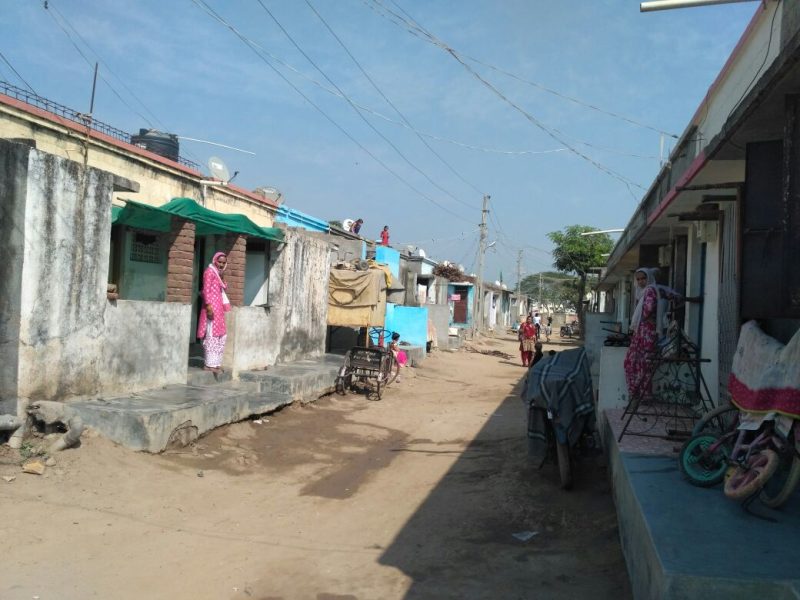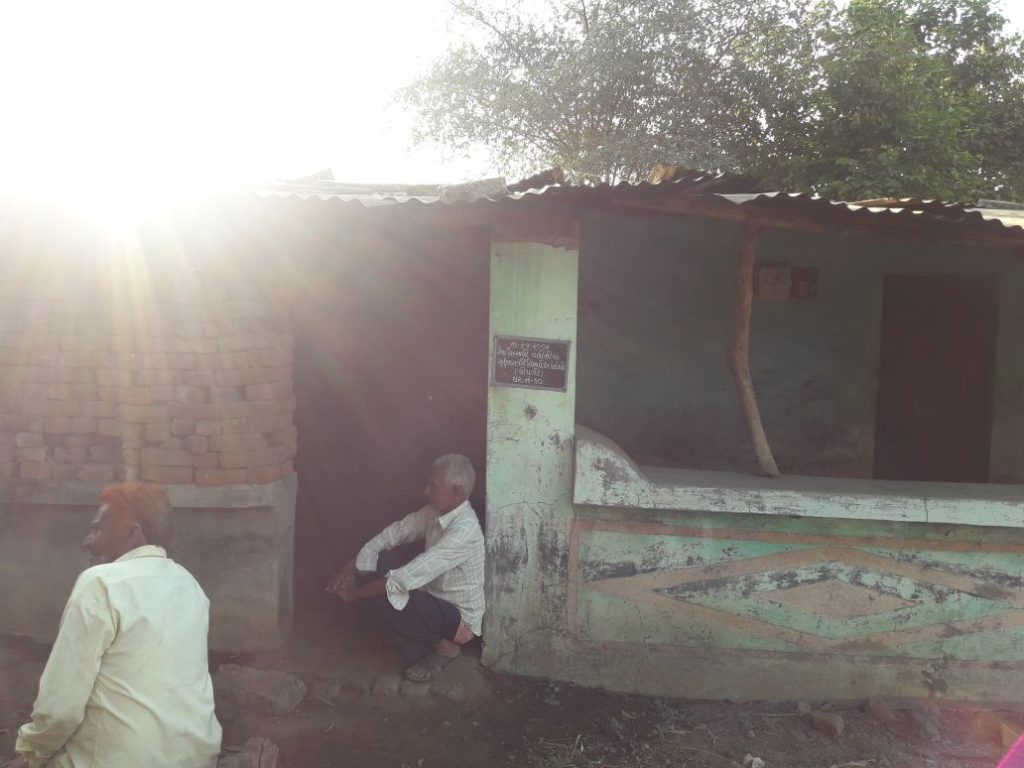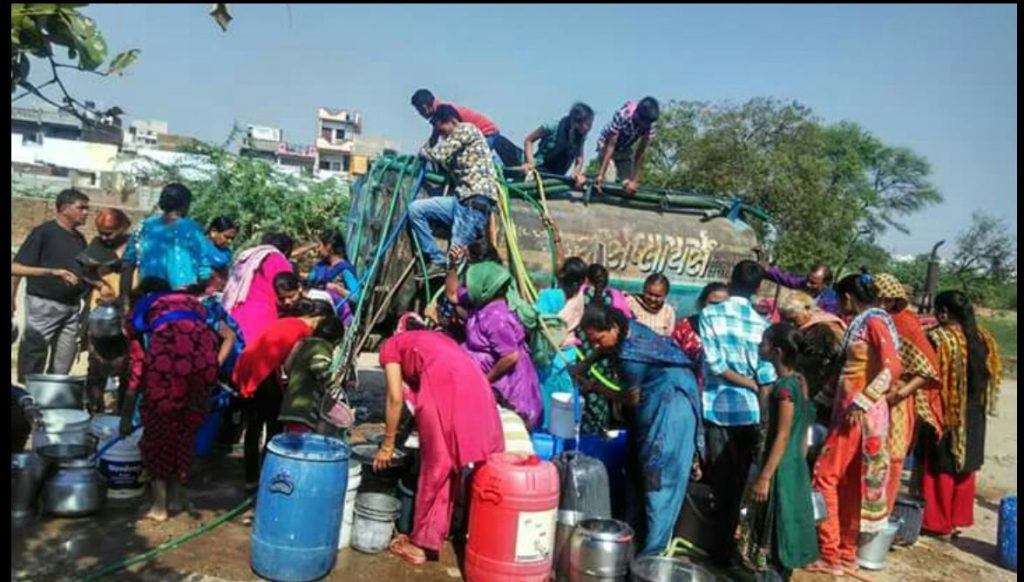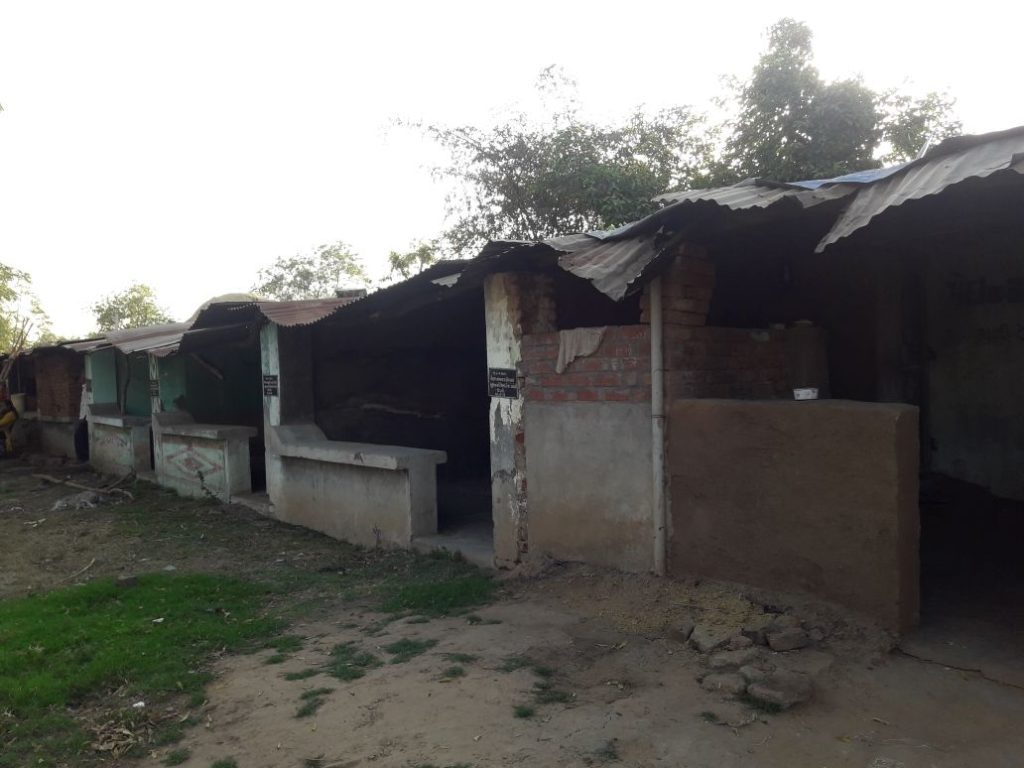
20 years after Gujarat riots, victims live in temporary shelters with few rights

39Rahimbhai and his family of seven took refuge in a relief colony at Tankaria in Gujarat’s Bharuch district in March 2002. His was one of the eight families that migrated from various places, such as Vadodara, Kheda, and Ahmedabad, to the Tankaria relief camp. The rehabilitation colony was established by an NGO, Islamic Relief Committee (IRC), and was meant to be a temporary shelter for those displaced in the riots. Twenty years later, the 12ft x 20ft room of the relief colony has become the permanent home of Ramhimbhai and his family.
“We fled from Makdarpura in Vadodara, where my family used to live and I used to run a meat shop. Our house was burnt to ashes, and the meat shop has now been taken over by someone else,” shared Rahimbhai, who now sells imitation jewellery for a livelihood.

“An IRC representative brought us here, to Tankaria, and since then, my family has been living in this single room. When we got here, we paid around Rs 2,000 for electricity connection from whatever little amount we could carry on us while fleeing. But we got the connection only in 2005. We are still struggling to get ownership rights of the house despite living here since 2002,” he added.
A life amid waste and stench
Another such relief camp in Ahmedabad is Citizennagar, popularly known as Bombay Hotel area. It is an urban slum where 40 families displaced in the riots have been living since 2003.
The camp, set up with the help of the Kerala Muslim League, is located on the outskirts of Ahmedabad near the infamous 80-ft garbage dump of Pirana. The families have been living here for the past 20 years, amid the stench from the garbage dump, open drains, and smoke from the adjoining chemical factories.
Also read: With 2002 Gujarat riots back in discourse, Cong’s dilemma is how to deal with it
Nadeembhai Saiyyed used to be a carpenter and own a shop in Naroda Patiya area of Ahmedabad. After his shop was burnt down, Saiyyed and his family of five fled to Citizennagar and have been living in the single room allotted to them in 2003.
“We were a family of five when I came to live here in this single room. But my children have grown up now. My sons are married and have their own families. It is impossible to live in this single room anymore,” Saiyyed said.
Citizennagar, like other relief camps, was meant to be a temporary shelter for the families displaced in the riots, but ended up being a permanent slum of the 40 families. Government apathy is palpable, as there is no traversable road leading to the camp, no primary health centre, school, or basic facilities like sanitation.
Walk for water
Madaninagar Colony, another relief camp in Ahmedabad that is home to over 300 families displaced in the riots, had no water connection until 2016. The nearest water source was a borewell a kilometre away. For some years after the families shifted here, the representatives of Jamiat Ulema-e-Hind, an Islamic organization that built the camp, used to supply water to the camp. Women had to fetch water from tankers ferrying water twice a day to the camp.

In Murtazanagar relief camp in Pipli, Anand district, 19 houses with tin roofs and no lights have been home to 24 families displaced in the riots. Over the years, the walls of these poorly-built houses have developed cracks. Once landless labourers, these families are now daily wage earners.
Around 2 lakh people were displaced in the riots of 2002 in Gujarat. Most of them remained displaced for a year until some Islamic relief organizations and NGOs settled 16,087 people in 83 relief colonies across the state.
Also read: SC dismisses one of the two pleas by Bilkis Bano against release of 11 convicts
Currently, over 3,000 families continue to live in these 83 relief colonies, of which 15 are in Ahmedabad, 17 in Anand, 13 in Sabarkantha, 11 in Panchmahal, eight in Mehsana, five in Aravalli, eight in Mehsana, and four each in Bharuch and Kheda districts. These colonies were primarily built by four organizations — Jamiat Ulema-e Hind, Gujarat Sarvajanik Relief Committee, Islamic Relief Committee, United Economic Forum, and some local NGOs.
Nowhere to go
“Most of these colonies have no basic amenities. Fifty-nine colonies do not have accessible internal roads, 53 colonies do not have approach roads, 68 colonies have no proper drainage systems, and 18 colonies have no street lights. Despite such conditions, those displaced in riots continue to live in these colonies, for they have nowhere else to go. They are scared to go back to their home districts. Most them lost all their documents in the frenzy of the riots; so, they are not eligible for loans. Only in 17 of the 83 colonies, the houses are in the names of the people who came to live there following the riots,” said Hozefa Ujjaini, a minority rights activist of Janvikas, a local NGO that works for those displaced by the riots.
“Some victims, who could manage to get hold of legal documents after the riots, collectively bought a plot of land from a private owner to establish a relief colony. However, that could not guarantee a home for these victims. In Himmatnagar and Anand districts, where the victims collectively bought a piece of land, are now being threatened to vacate it, as its value has gone up with highways coming up close by. These people are now on the verge of being displaced again,” Ujjaini added.

Government apathy
Notably, multiple representations have been made to the Gujarat government regarding the conditions of the relief camps, but in vain. According to data collected by Janvikas, five applications and more than 15 memorandums were written addressing the chief minister between 2015 and 2017 alone. In 2016, Ahmedabad based minority rights activist Kalim Siddique filed an RTI application seeking information on the number of primary health centres within a 10-km radius of Citizennagar relief camp. The Ahmedabad Municipal Corporation (AMC) responded by listing all the private clinics in the area, including a “Nurani clinic” run by SR Fakkruddin, a Nurani hakim.
Also read: What if Nirbhaya rapists had become ‘sanskaris’ like Bilkis Bano convicts?
Multiple organizations representing the families of those displaced in the riots have appealed to the Gujarat government over the years for its intervention in the matter. In 2007, the affected families voiced their demands under the banner of Aantarik Visthapit Hak Rakshak Samiti. Among their many demands was the regularization of the rehabilitation colonies. Subsequently, in 2008, Gujarat-based activist Gagan Sethi filed a PIL in the High Court on behalf of the NGO Centre of Social Justice, demanding the full implementation of the relief package. On September 9, 2011, the Gujarat High Court dismissed the PIL, holding that the state government had disbursed the amount received from the Centre.
In 2018, Alp Sankhyak Adhikar Manch, a Gujarat-based minority rights organization, claimed that the government had done little to transfer the ownership rights to Internally Displaced People (IDP) of the 2002 riots. More than four years since, precious little has changed for the riot victims.

